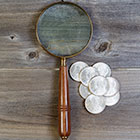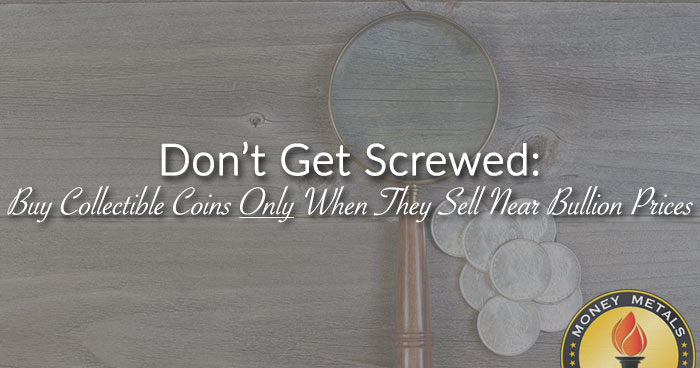
Gold and silver investors generally get started because they are looking for a safe haven. Unfortunately, many of them call a dealer advertising precious metals on TV. The advertising resonates because it touches on all the best reasons to own physical metal, so they pick up the phone.
Then they get conned.
The salesperson talks them into buying overpriced rare coins, instead of low-cost bullion coins, rounds, or bars.
They began by looking for a conservative investment that will hold up in the face of perpetual inflation and/or a collapse in paper securities markets, a la 2008. What they wind up with is a coin that costs 50% more than it’s worth because the dealer misrepresented how rare and desirable the coin really is.
That is how people make a lousy investment in rare or collectible coins. Here is how somebody can make a good one...
Alert buyers can get certain historic coins without paying large premiums. They can add something to their stack which offers two ways to appreciate in value. These coins will gain in price as the metals rise or as collectors take a renewed interest or both.
Right now, investors can grab graded pre-1933 gold coins on the cheap. By “cheap” we mean within $50 of the price for circulated, non-graded versions of the same coins. Money Metals Exchange often has MS-63 or MS-64 grade coins available on our Product Specials page priced this way.
In a weak coin market like we have today, more investors are selling and premiums are at multi-year lows. Coins with these lower MS grades command very little, if any, additional price. Supply is more than plentiful enough to meet the tepid demand.
However, when the market heats these coins will quickly evaporate from dealer stocks and premiums will rise.
Buyers who move quickly can get a $20 Liberty gold US coin for about $100 over melt value. Not too shabby for a coin graded and certified to be in a premium condition by PCGS or NGC.
The St. Gauden’s version of the Double Eagle will usually cost a bit more because of its popular design, but the same general rule applies. If you can get a graded version close to the same price as a circulated coin, you can’t go wrong.
While we are talking about it, circulated, non-graded pre-1933 gold coins are almost always in stock these days. Those also offer some potential for appreciation in the premiums. They are a piece of American history and are priced very competitively with any of the modern 1 oz bullion coins.
Some proof coins, such as the 1 oz Proof American Gold Eagle, are of tremendous value right now. Many have been sold back in recent months, meaning inventories in bullion dealers’ vaults are growing, and thus premiums are falling.
These types of proof coins – products generally pushed on unsuspecting investors by high-pressure, heavily commissioned rare/collectible coin salespeople – are usually tremendously overpriced and wind up being a terrible buy. However, right now is one of those times when it makes sense to add some of these products to your stash based on how low the collectible premiums have sunk.
Another option to consider is the limited-issue silver bullion coins put out by government mints including the U.S. Mint, Royal Canadian Mint, and Britain’s Royal Mint. The America the Beautiful series of 5 oz silver coins for sale is a good example. The U.S. Mint began the series in 2010 and issues 5 new designs each year. There are 56 total designs planned before the series ends in 2021.
Many of the prior designs now command a healthy premium and some of the more recent releases sold out almost immediately. But those who move quickly can get them for roughly the same per-ounce premium as the silver American Eagle – the world’s most popular bullion coin with mintages in the tens of millions each year. These one-ounce silver bullion coins, also come in fractional sizes for those looking for someone in 1/10. 1/4 or even 1/2 ounce.
The same can be said for the Royal Mint’s series of 2-ounce and 10-ounce Queen’s Beast coins.
There has been strong demand and premiums are rising for some of the earlier issues that are no longer available from the mint.
The priority, as always, with a gold or silver investment is to focus on keeping premiums (meaning your transaction costs) low.
Avoid buying something unless you have a good handle on exactly what it is worth to sell. The difference between the asking price and the bid price should be quite modest. Buyers who keep that discipline are always going to be happier. If, in addition, they get coins with the potential to command significantly higher premiums down the road, it is a very nice bonus.

About the Author:
Clint Siegner is a Director at Money Metals Exchange, a precious metals dealer recently named "Best in the USA" by an independent global ratings group. A graduate of Linfield College in Oregon, Siegner puts his experience in business management along with his passion for personal liberty, limited government, and honest money into the development of Money Metals' brand and reach. This includes writing extensively on the bullion markets and their intersection with policy and world affairs.





